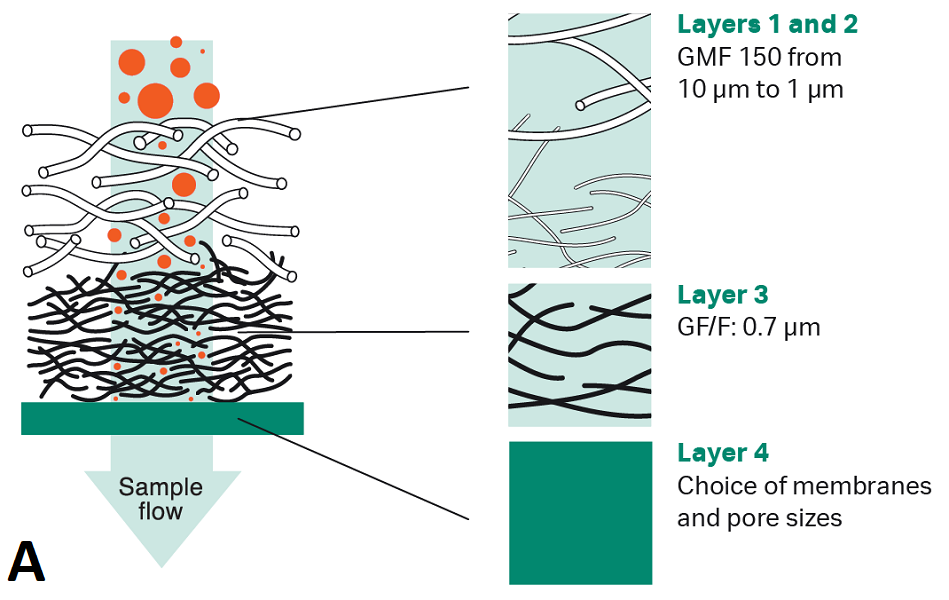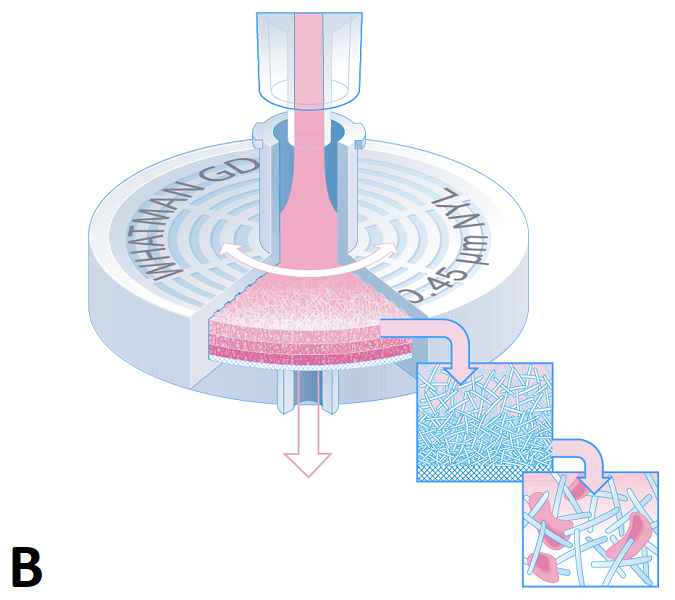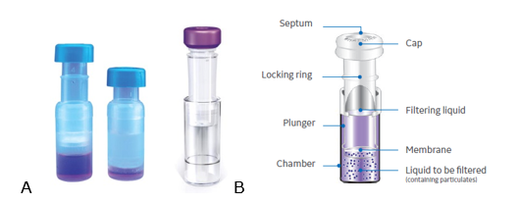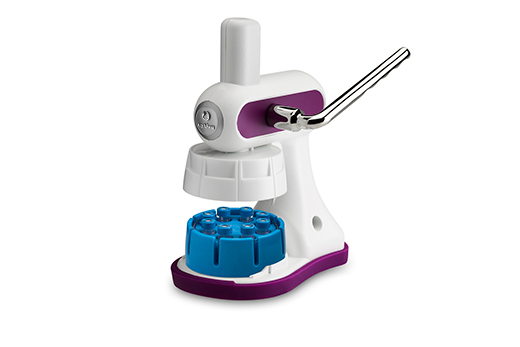Sample filtration protects your HPLC column and preserves data quality. Read our tips on filter and solvent selection and the use of tools to save time in HPLC prep, improve lab efficiency, and better your analytical chemistry techniques.
Filtering samples prior to high-performance liquid chromatography (HPLC) analysis can help avoid frit clogging while maintaining data quality. Adding a filtration step to the HPLC prep process can also take up a lot of time when many samples are being analyzed. So, what filtration strategies can be used to simplify and speed up HPLC prep? Read on to learn options for filtering samples to better your HPLC technique.
HPLC prep using a stacked syringe filter
Syringe filtration often involves aspirating the sample, fitting a particle filter, and filtering into an autosampler vial. The vial is finally capped and transferred to an autosampler. This filtration process can be repeated dozens of time a day, depending on your laboratory workflow and HPLC capacity.
You might find high particulate samples more difficult and time consuming to filter. To address this filtration challenge, stacked filter devices have multiple filter layers starting with larger pore sizes and going down to the desired pore size. This approach to sample filtration for HPLC traps large particles first and smaller particles successively (Fig 1). The device does not get clogged as easily as devices with a single membrane, making filtration and HPLC prep faster and easier.


Fig 1. (A) Schematic of stacked filter showing layers of glass microfiber stacked above the filter membrane; (B) Schematic of Whatman GD/X syringe filter with pre-filtration stack.
Go syringeless in your HPLC prep
If your samples are low particulate and relatively easy to filter, a syringeless filter option simplifies the HPLC prep and filtration process greatly.
Using a standard syringe filter involves at least four and up to five individual components if you include the initial sample storage vial. When you have dozens (or hundreds!) of samples to filter, the multi-step workflow is time consuming and can lead to sample loss.
In a syringeless filter, the filter membrane, pre-filtration chamber, post-filtration storage vial, and cap are all part of one device (Fig 2). This design streamlines HPLC sample prep and minimizes the number of laboratory consumables. Filtration with a syringeless filter can be performed three times faster than with syringe filters.
Using a syringeless filter simplifies the filtration process because you only need to add the sample to the outer chamber, place the plunger, and push. The inner storage vial holds your filtered sample ready for HPLC analysis, so it can go directly into your chromatography column autosampler. Construction can be either polypropylene or glass and the vial can be either clear or amber in color depending on the requirements of your sample.
Fig 2. (A) Whatman Mini-UniPrep and Whatman Mini-UniPrep G2 syringeless filter devices; (B) Schematic of Whatman Mini-UniPrep and Whatman Mini-UniPrep G2 filter components.
Broaden your solvent compatibility for HPLC
When your lab prepares a wide variety of sample types using different solvents for HPLC analysis, identifying appropriate membrane materials can be time consuming. Different materials might be more or less suitable for a given sample based on chemical compatibility and solvent resistance.
If you want to make filtration easier, you could try a membrane material with broad solvent compatibility. Regenerated cellulose, for example, is well suited for both hydrophilic and hydrophobic solvents. Using regenerated cellulose for most or all your samples can reduce time spent researching and selecting materials.
Use tools to boost chromatography sample throughput
A multi-compressor can save time when using syringeless units (Fig 3). Filtering multiple samples simultaneously with a dedicated tool can also reduce hand strain.
Fig 3. Multi-compressors for syringeless filters save time and can reduce hand strain compared with devices capable of compressing single samples.
Try our Whatman filter selector to find out if you are using the most appropriate filtration solution for your samples. To discuss any filtration or HPLC prep challenges you are facing, please contact the Cytiva scientific support team.

